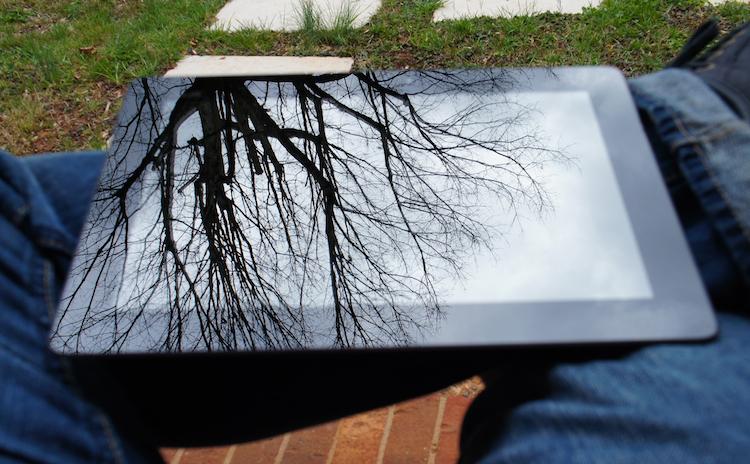
Mobile devices, while insanely portable and convenient, are not perfect. They can easily create about as many problems as they solve, thanks to their numerous limitations. Battery life doesn't always last throughout the entire day and can leave you without any form of communication hours before you make it back home; wireless coverage can quickly turn from perfect to spotty in a matter of seconds; and often, the software on mobile devices isn't able to handle all of the work our home computers are capable of (yet).
When it comes to electronics, though, especially touchscreen devices, everything hinges on the functionality and quality of the display – its size, sensitivity, responsiveness, and particularly its brightness.
In most cases, any old display will do. If you're always indoors, you probably keep your phone's display at or below medium brightness. Chances are, most of you set the display to auto-brightness when you first got your phone or tablet and have never given it second thought.
But it never fails. The moment I step outside, I have to stop and adjust my display brightness just so I can see and use my phone.
The automatic brightness setting that comes on just about every phone will usually do the trick. However, I've noticed that on the iPhone, that particular setting is extremely conservative (pro-battery life) and never adjusts to full brightness, even when you're outside in direct sunlight. And the Android phone I'm currently using, the Galaxy Nexus, is running a custom ROM, and the automatic brightness setting doesn't even work. Despite the ability to have the brightness adjust itself based on the current lighting, I always find myself having manually adjust it anyway. (I am ever-thankful for the Power Control widget in Android.)
Some display technologies are better than others in direct sunlight, like displays with higher contrast levels. ASUS claims that the display on the Transformer Prime, which is a Super IPS+ display, is better for outdoor viewing than your average tablet due to it being 40% brighter. Sure, it's a little better, but it's still extremely reflective and the added brightness comes at the sacrifice of battery life. Once you enable the "IPS+" or "Outdoor" mode on the Prime's display, you can watch the battery percentage drop.
Regardless, if it is a moderately bright day outside, it can be extremely difficult to distinguish what is on the display – even when turning the brightness up all the way.
Generally, an overly reflective display doesn't bother me too much, as I spend a great deal of my time indoors. And by the time I finish working or go out for a run, the sun is down anyway. But the weather is warming up and I'm living in a quiet neighborhood (instead of a noisy apartment) in a house with a nice (and tiny) porch. It's calming to sit outside and work, and I've noticed that it boosts my productivity nearly tenfold. Not to mention, it's less distracting to have my hyperactive dog run around chasing birds in the front yard while I work rather than him constantly pawing at my leg and whining because I won't pay him any attention.
In other words, I've started to really enjoy sitting outside while I work. However, neither the Prime or MacBook perform particularly well outdoors. And I can forget checking my phone without shielding it from the sun with my hand. Even on an overcast day like today, I find myself squinting at the displays of my MacBook and Prime with the brightness turned all the way up. It's not so much the brightness as it is the reflectiveness of the glass.
I know there is research being done in this area, but there hasn't been any notable progress to make it to consumers' hands as of yet, aside from Pixel Qi's low power displays in the Notion Ink Adam tablets. And I hardly count simply making a brighter display a solution. It's a half-hearted fix that only barely patches one problem and causes another (severe battery drain).
Tell me, readers, does it frustrate you when you can't use your smartphone in direct sunlight? Do you have any tricks, aside from the hand-visor method, that make viewing your phone in bright conditions any easier? Would you consider a tablet with a Pixel Qi display simply for the low power consumption and readability in bright sunlight?